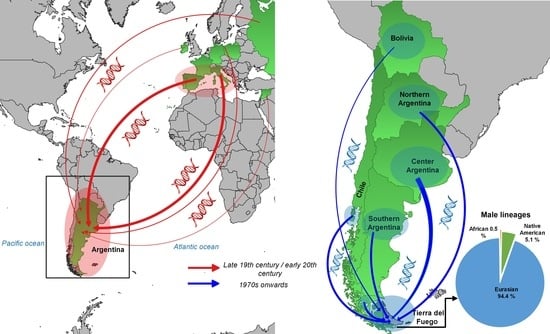Tierra Del Fuego: What Is Left from the Precolonial Male Lineages?
Abstract
Share and Cite
Rodrigues, P.; Velázquez, I.F.; Ribeiro, J.; Simão, F.; Amorim, A.; Carvalho, E.F.; Bravi, C.M.; Basso, N.G.; Real, L.E.; Galli, C.; et al. Tierra Del Fuego: What Is Left from the Precolonial Male Lineages? Genes 2022, 13, 1712. https://doi.org/10.3390/genes13101712
Rodrigues P, Velázquez IF, Ribeiro J, Simão F, Amorim A, Carvalho EF, Bravi CM, Basso NG, Real LE, Galli C, et al. Tierra Del Fuego: What Is Left from the Precolonial Male Lineages? Genes. 2022; 13(10):1712. https://doi.org/10.3390/genes13101712
Chicago/Turabian StyleRodrigues, Pedro, Irina Florencia Velázquez, Julyana Ribeiro, Filipa Simão, António Amorim, Elizeu F. Carvalho, Claudio Marcelo Bravi, Néstor Guillermo Basso, Luciano Esteban Real, Claudio Galli, and et al. 2022. "Tierra Del Fuego: What Is Left from the Precolonial Male Lineages?" Genes 13, no. 10: 1712. https://doi.org/10.3390/genes13101712
APA StyleRodrigues, P., Velázquez, I. F., Ribeiro, J., Simão, F., Amorim, A., Carvalho, E. F., Bravi, C. M., Basso, N. G., Real, L. E., Galli, C., González, A. d. C., Gamulin, A., Saldutti, R., Parolin, M. L., Gomes, V., & Gusmão, L. (2022). Tierra Del Fuego: What Is Left from the Precolonial Male Lineages? Genes, 13(10), 1712. https://doi.org/10.3390/genes13101712






